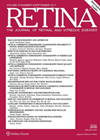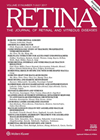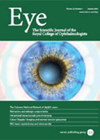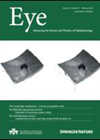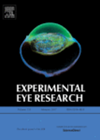
Journal Reviews
Management of diabetic macular oedema (DMO)
The authors present guidelines on current diagnostic and therapeutic procedures in the management of DMO. Fluorescein angiography (FA) and optical coherence tomography (OCT) are recommended before starting treatment to help diagnose and stage DMO, and can be repeated if there...
OCTA FAZ measurements in vein occlusion
Previous studies have confirmed that foveal avascular zone (FAZ) enlargement is correlated with visual acuity impairment in patients with retinal vein occlusion (RVO). This current study aimed to evaluate the OCT angiography parameters: the area of FAZ, foveal and parafoveal...
Ocular complications in retinal vasculitis
In this retrospective study the authors aimed to characterise the incidence rates of visual loss and ocular complications associated with retinal vasculitis (RV – annual incidence of 1-2/ 100000/ per annum). A secondary objective was to compare the visual outcomes...
Steroid implants in the treatment of post-epiretinal membrane peel macular oedema
This is a retrospective review of 39 eyes of 37 patients treated with Ozurdex® (intravitreal dexamethasone implant) for persistent post-operative cystoid macular oedema (CMO) following vitrectomy and idiopathic epiretinal membrane (ERM) peeling. The 0.7mg implant was injected in each eye...
The natural history of treatment naïve choroidal neovascularisation (CNV) in geographic atrophy
The aim of this retrospective study is to assess the characteristics and natural history of quiescent CNV in geographic atrophy (GA) utilising multi-modal imaging. Case notes were reviewed of patients diagnosed with geographic atrophy between January 2010 and December 2016...
OCT in proliferative diabetic retinopathy
This report set out to describe the anatomical relationships between retinal neovascular complexes (NVC), the posterior vitreous, and the vitreoretinal interface in patients with proliferative diabetic retinopathy using spectral domain OCT. The following was recorded for each NVC 1) posterior...
Vision loss during Eylea treatment for AMD
This report investigated patients who lost more than two lines of vision despite periodic injections of aflibercept and explored the factors associated with vision loss. One hundred and ninety-six eyes were included in this study over a two year period....
Risk of intraocular haemorrhage with new oral anticoagulants
The authors conducted a study to assess the risk of intraocular haemorrhage with warfarin dabigatran, rivaroxaban, apixaban. All reported cases of intraocular haemorrhage (vitreous, choroidal, or retinal) with warfarin and new oral anticoagulants (NOACs) (including dabigatran, rivaroxaban, apixaban) from the...
Effect of pregnancy on myopia
The authors present a longitudinal study with a large sample size assessing the association between pregnancy and the onset or progression of myopia. The study participants included the SUN cohort which comprised of young adult female university graduates in Spain....
Does intravitreal bevacizumab help in diabetic retinopathy related vitreous haemorrhage?
This retrospective, interventional case series, aimed to assess the effectiveness of intravitreal bevacizumab (IVB) in vitreous haemorrhage secondary to proliferative diabetic retinopathy. The primary outcome was the rate of vitrectomy (PPV) after IVB, with secondary outcomes the number of IVB...
Fingolimod: ocular adverse effects
In this article the authors review the ocular side-effects of Fingolimod which is an oral immunomodulating drug used in the management of relapsing-remitting multiple sclerosis (RRMS). Fingolimod-associated macular oedema (FAME) is the most common ocular side-effect linked to this drug....
Importing iron to the retina
In the retina, iron is particularly critical for the visual phototransduction cascade. In the retinal pigment epithelium (RPE), RPE65 activity leads to 11-cis-retinaldehyde, the photosensitive component of rhodopsin production and iron containing enzymes are necessary for disc replacement in photoreceptor...


